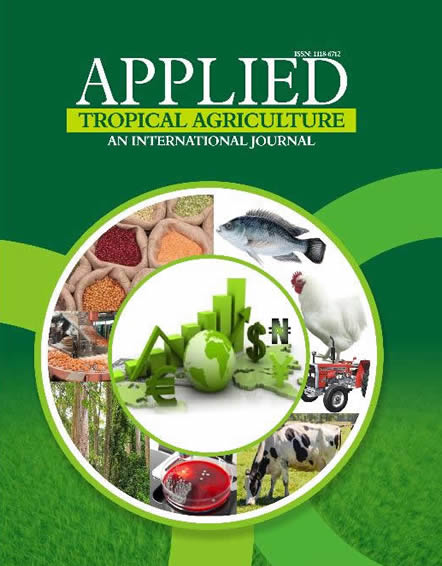A study was conducted to determine the pepper production activities pattern in Gboko, Buruku and Ushongo Local Government Areas (LGAs) of Benue State. One hundred and thirty- eight pepper farmers randomly selected from the three LGAs responded to a structured questionnaire. Results showed that 68% of the farmers were within 21 – 40 years’ age range. Males were more involved in pepper production (73%) than females (27%) while 86% of the pepper farmers were married. Ninety-two per cent (92%) of farmers from Gboko, 87% from Buruku and 67% from Ushongo used pepper seeds from previous harvest for cultivation. The cultivated pepper species were Capsicum annuum var. ‘Atarado’, C. annuum var ‘Tatashe’, C. frutescens var Birdeye and C. frutescens var ‘Sombo’. Capsicum annuum var ‘Atarodo’ was grown by 78% of the pepper farmers while C. frutescens var Birdeye pepper was grown by 31% of the pepper farmers in Gboko and Ushongo LGAs, respectively. Sweet pepper, C. annuum var ‘Tatashe’ was the least cultivated by only 2% of the farmers in Ushongo LGA. Pepper was either grown as a monocrop or intercropped with other crops such as cowpea, okra, cassava, tomato, sorrel and yams. Pepper production in Ushongo LGA was mostly for commercial purpose (88.10%) while farmers in Buruku (96.36%) and Gboko (53.66%) produced pepper for consumption. Pepper anthracnose disease resulted in estimated yield losses of between 20-50%. Most pepper farmers had no technical information on pepper production.
PAPER TITLE :PEPPER PRODUCTION PATTERN IN THREE LOCAL GOVERNMENT AREAS OF BENUE STATE, NIGERIA
APPLIED TROPICAL AGRICULTURE | VOLUME 20 NUMBER 2 2015
Paper Details
- Author(s) : Ekhuemelo, Chigoziri
- Abstract:


